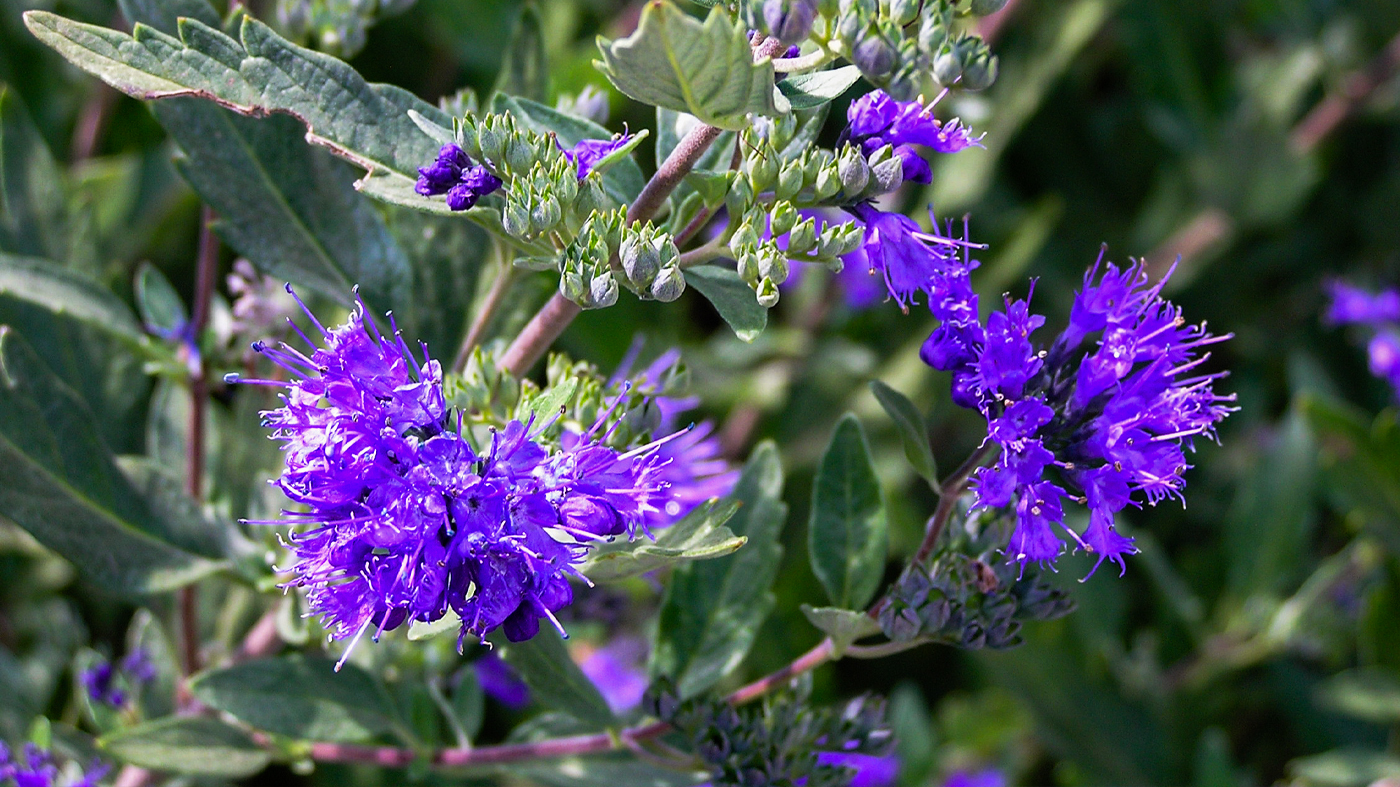Caryopteris spp.
Caryopteris x clandonensis 'Arthur Simmonds', commonly known as Arthur Simmonds bluebeard, is the result of a cross between Caryopteris incana and Caryopteris mongholica.
The original hybrid was raised in plantsman Arthur Simmonds' garden in Surrey, England, in 1933, and belongs to that group of plants known as dieback shrubs. These are soft-wooded shrubs or subshrubs that behave more like herbaceous perennials than like woody shrubs. Their above-ground growth tends to die back, anywhere from a few inches from their tips all the way down to the base of the plant. But the roots remain hardy; and when pruned hard in early spring, Caryopteris will produce bright blue flowers on all new wood.
Native to Mongolia and parts of China and Japan, bluebeard thrives in full sun in its home range of steep hills and dry, infertile soil. When moved to Chicago gardens, it retains its form as a relatively low-mounding shrub, 2 to 4 feet tall, whose frosty green, aromatic foliage is a lovely foil for virtually all other plants of the true Chicago mixed border — perennials, grasses, dwarf conifers, and other select woodies — especially any plants with burgundy foliage. The delightful surprise of this airy shrub is its late-season production of fragrant true blue blossoms, appreciated not only by gardeners but also by swallowtail, monarch, and viceroy butterflies in search of fortification.
A member of the verbena family, or Verbenaceae, Caryopteris comprises 15 different species. The plant most valuable for Chicago-area gardens is C. x clandonensis and its cultivars. Kris Jarantoski, executive vice president and director of the Chicago Botanic Garden, who has studied dieback shrubs for 25 years, singles out 'Arthur Simmonds' for its cold-hardy performance in evaluation trials. When grown in open beds at the Garden, the plants have flourished with light mulching, no fertilizer, and a regular hard pruning down to three or four nodes in very early spring. Overzealous fertilizing produces an abundance of greenery but sacrifices floral display. As is true with so many other silver-foliaged plants, full sun and loose, dry, well-drained soil are crucial.
While 'Arthur Simmonds' has proven to be the most reliably hardy of the cultivars, the Garden does grow a few of the other cultivars with varying degrees of success. Against the western wall of the English Walled Garden, Caryopteris x clandonensis 'Longwood Blue' is a spectacular spreading plant with a profusion of late summer, violet blue flowers. And 'Arthur Simmonds', which is on display in the English Walled Garden, Landscape Gardens, and the Lavin and Pullman Plant Evaluation Gardens, is sure to become a part of your gardening dreams too. You can even enjoy some exceptionally large specimens of bluebeard while you picnic outside the Visitor Center.


